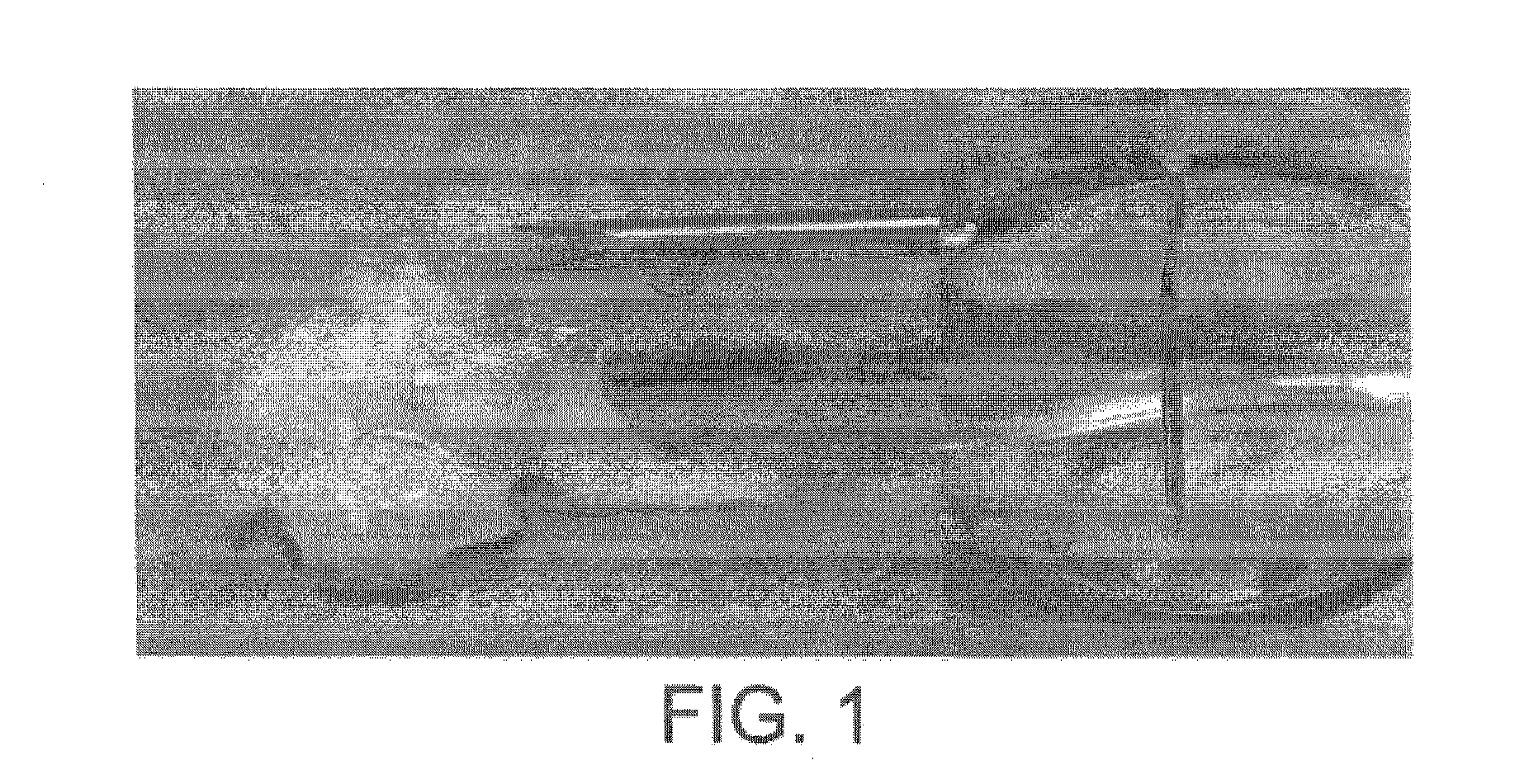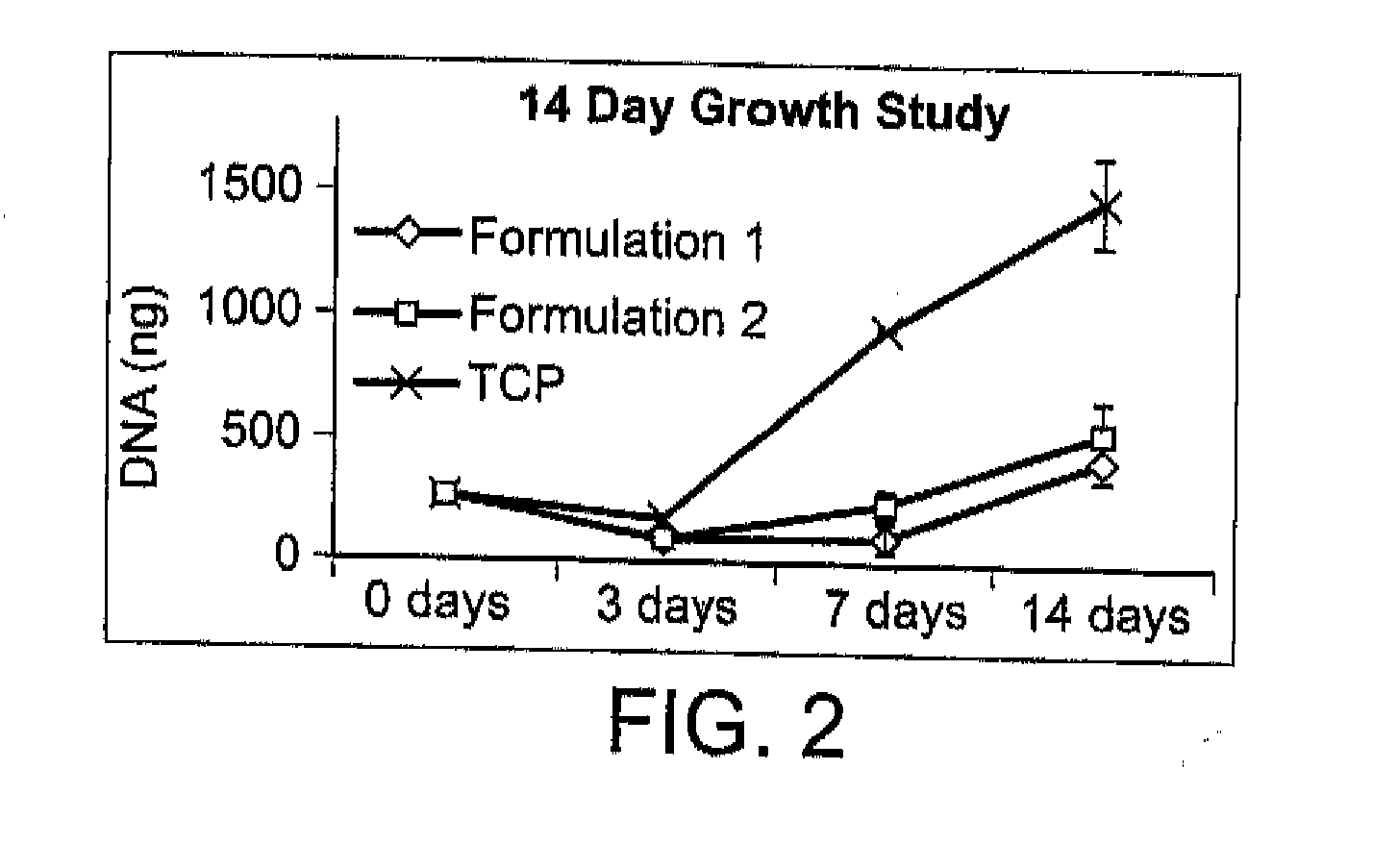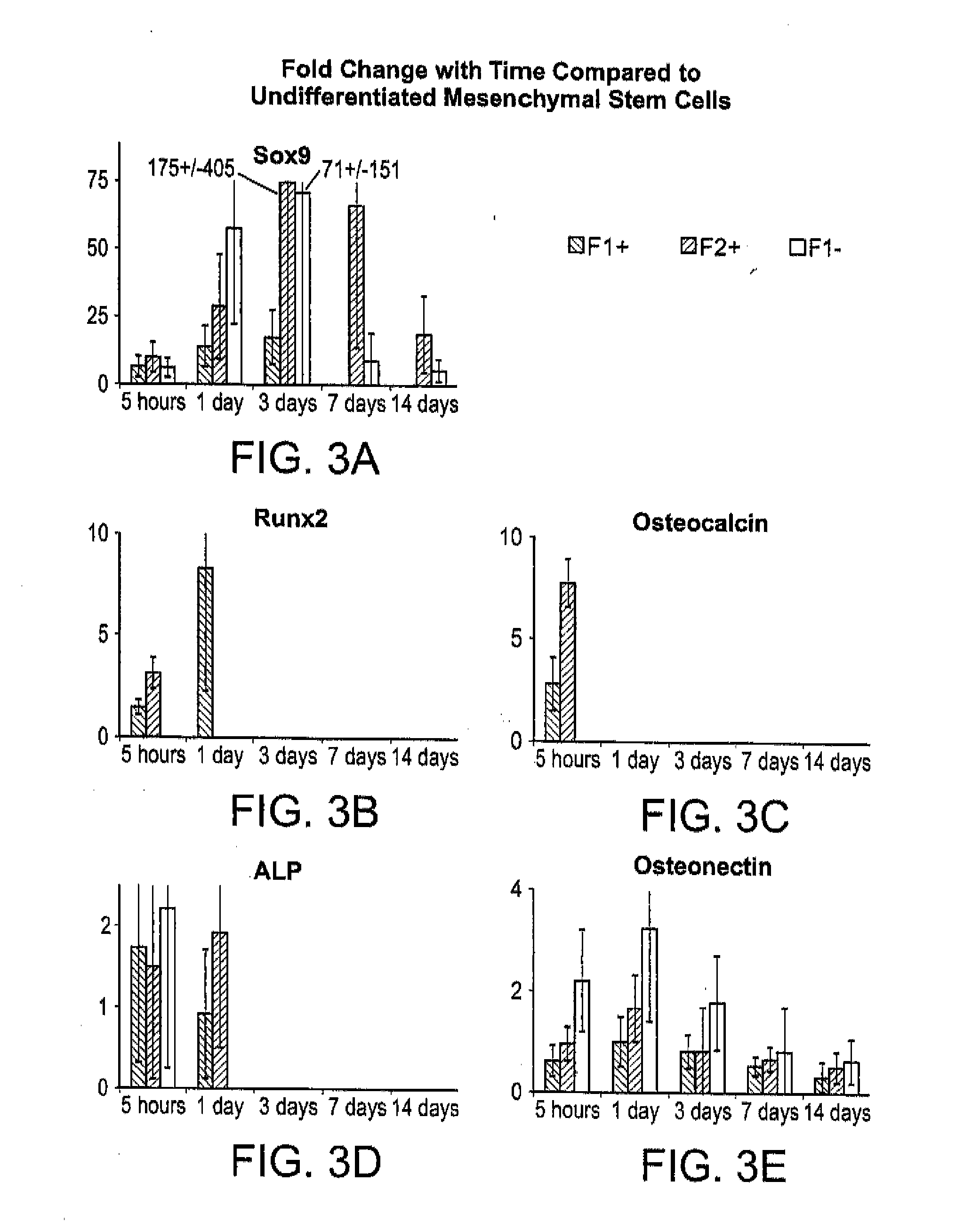Biomaterial composite composition and method of use
a biomaterial and composite technology, applied in the direction of peptide/protein ingredients, packaged goods, foodstuffs, etc., can solve the problems of disc degeneration, difficult repair of damaged disc as functional living tissue, and unsatisfactory reconstruction results of these interventions
- Summary
- Abstract
- Description
- Claims
- Application Information
AI Technical Summary
Benefits of technology
Problems solved by technology
Method used
Image
Examples
example 1
[0069]Rat mesenchymal stem cells from two donors which had been cryopreserved upon reaching 80% confluence of primary cultures where combined at a 1:1 ratio and seeded at 10̂4 cells / cm̂2 in T-flasks. Cells were passaged at 80% of this first passage and used for experimentation upon again reaching 80%. At the beginning of each experiment MSCs from two donors were combined and expanded for one passage in monolayer and were entering their second passage. Cells were grown in 10% (v / v) FBS-supplemented DMEM-HG containing penicillin, streptomycin, and amphotericin under normal culture conditions (37° C.; 5% (v / v) CO2; 100% RH).
[0070]Experimental Composition 1 and Composition 2 (Table 1) were formed in 3.6 ml and 3.3 ml sterile quantities, respectively. Calcium salts were loaded in to 3 cc syringes which were sterilized with gamma irradiation (˜2.5 Mrad). Concentrated human platelet releasate (hCPR) and water were sterilized through 0.2 μm filtration. Alginate solutions at twice the final ...
example 2
[0089]Table 1 details the biomaterial composite formulations and preparation of the formulations F1+ and F2+ which were created through syringe mixing. A syringe containing sodium alginate (Sigma; St. Louis, Mo.) solution at twice the final concentration was coupled to a second containing 125-150 μm β-tricalcium phosphate (β-TCP) granules (Plasma Biotal, Ltd.; Derbyshire, United Kingdom), calcium sulfate dihydrate (USG Corp.; Chicago, Ill.), human concentrated platelet releasate (hCPR), and, for F2+, sodium citrate (Fisher; Waltham, Mass.). Components were mixed by twenty passes between the coupled syringes, which also initiated an ionic polymerization setting reaction. This mixture can be easily delivered through injection via a 16-gauge hypodermic needle prior to curing. Additionally, material controls with deionized water replacing hCPR were created and designated as F1− and F2−. hCPR was prepared under an Institutional Review Board-approved protocol at the University of Memphis ...
example 3
[0110]There exists a clinical need for consistent bone remodeling within problematic sites such as those of fracture nonunion, avascular necrosis, or irregular bone formations. To address such needs, a biomaterial composite composition is provided to induce early inflammatory responses after implantation and to provide later osteoconductive scaffolding for bone regeneration. Biomaterial composite-induced inflammation parallels the early stage of hematoma-induced fracture repair and allows scaffold-promoted remodeling of osseous tissue to a health state. Initiation of the wound healing cascade by two human concentrated platelet releasate-containing alginate / β-tricalcium phosphate biocomposites has been studies in vitro using the TIB-71™ RAW264.7 mouse monocyte cell line.
[0111]This in vitro example relates to tunable interactions between the platelet releasates and the biomaterial composites for enhancing hematoma-like fracture repair. Additionally, minimally invasive delivery for in ...
PUM
| Property | Measurement | Unit |
|---|---|---|
| Length | aaaaa | aaaaa |
| Fraction | aaaaa | aaaaa |
| Percent by mass | aaaaa | aaaaa |
Abstract
Description
Claims
Application Information
 Login to View More
Login to View More - R&D
- Intellectual Property
- Life Sciences
- Materials
- Tech Scout
- Unparalleled Data Quality
- Higher Quality Content
- 60% Fewer Hallucinations
Browse by: Latest US Patents, China's latest patents, Technical Efficacy Thesaurus, Application Domain, Technology Topic, Popular Technical Reports.
© 2025 PatSnap. All rights reserved.Legal|Privacy policy|Modern Slavery Act Transparency Statement|Sitemap|About US| Contact US: help@patsnap.com



